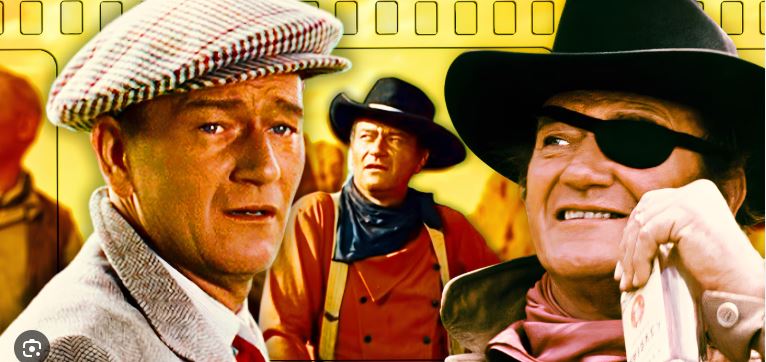John Wayne’s films are often celebrated for the epic proportions he made of the larger-than-life American heroes he portrayed. His cowboys rode across the American country like they owned it, his soldiers were lethal, and his lawmen and outlaws were compelling, if not charismatic. When his character demanded a jilted lover, Wayne went to great lengths of ruthlessness to mark his territory. However, a few roles in his career came not from this careful selection but from happenstance or necessity. One such part is his naval captain in the 1955 seafaring adventure Blood Alley. Wayne’s production house, Batjac Productions, was charged with the picture, and the film originally cast Robert Mitchum as its leading man. Unfortunately for the production, Mitchum was abruptly fired, and Wayne was forced to step into the role.
What’s ‘Blood Alley’ About?
Set in Cold War-era China, Blood Alley is a novel adaptation that follows an American sea captain, Tom Wilder (Wayne), from a Communist prison through his aided escape on condition that he helps to free and ferry villagers from their Communist rulers through a water channel called Blood Alley to safety in British-controlled Hong Kong. The villagers rely on Tom’s extensive experience in the waters to navigate an ancient boat without maps and a compass while evading pursuing Chinese authorities. During the journey, Wayne’s Tom becomes entangled with Cathy Grainger (Lauren Bacall), the daughter of a medical doctor forced to work for the Communists, though their romance is shy of toppling the broader political narrative. Wayne serves his signature grit and conspicuous presence, with Bacall’s performance providing a fiery counterpoint to his stoicism that makes their dynamic a stormy romance.
Central to Blood Alley are the propagandist ideologies of the Cold War. It is a dichotomy between the “evil” Communist regime and the “righteous” American hero, which aligns with its period’s cinematic trend of championing American values against perceived ideological threats. However, in its dispensation, the film depicts Chinese villagers as passive beneficiaries of Tom’s heroism, which is problematic as it reinforces a “White Savior” narrative that Hollywood is often accused of in depicting non-Western cultures. Most of the filming took place at China Camp in San Francisco Bay.
John Wayne Looks Up to the Spirit World for Companionship and Protection in ‘Blood Alley’

Despite its messaging that converges with Wayne’s beliefs, Blood Alley’s unique tone and elements make it an outlier in his works. It attempts to mash seriousness with comedy. Wayne’s Captain Wilder has an awkward ongoing dialogue with a phantom he affectionately dubs “Babe.” This spirit is ostensibly a figment of Wilder’s imagination born from his time in isolation as a political prisoner. It is a strange narrative device that injects an uneven attempt at comedy. The captain’s conversations with “Babe,” ranging from playful banter to moments of bizarre introspection, offer a rare glimpse of John Wayne engaging in such interplay. However, these moments often conflict with the film’s otherwise serious tone. Wayne is also involved in strange actions compared to his typical stoic on-screen depictions. For instance, he awkwardly jokes with his Communist captors, butt-spanks an aide, imitates accents, hides in a coffin, and attempts to balance a cup full of tea on his head while in motion.
John Wayne’s Portrayal of Captain Wilder Was a Result of ‘Blood Alley’s Production Debacle

On a good day, Blood Alley would have been a promising collaboration between Wayne and Mitchum (it eventually happened on El Dorado), with Robert Mitchum slated to play the lead role of Captain Tom Wilder. However, Mitchum reportedly clashed with director William A. Wellman and other crew members, culminating in an altercation that led to his dismissal. Faced with a production in turmoil, Batjac Productions scrambled to find a replacement. According to Randy Roberts’ John Wayne: American, these efforts, including reaching out to Gregory Peck and Humphrey Bogart, fell through, leaving Wayne, the project producer, to don the captain’s hat.
Despite its flaws, Blood Alley does offer moments of cinematic merit. The maritime sequences and the villagers’ unity of purpose, amid limited characterization, underscore the power of collective resilience in the face of adversity.Blood Alley is a product of its time—a curious artifact of the industry’s geopolitical storytelling tendencies during the Cold War. Its redeeming qualities earn it a place at the far corner of Wayne’s sea outings as the lesser-quality version of pictures like The Sea Chase, Reap the Wild Wind, and Wake of the Red Witch.
